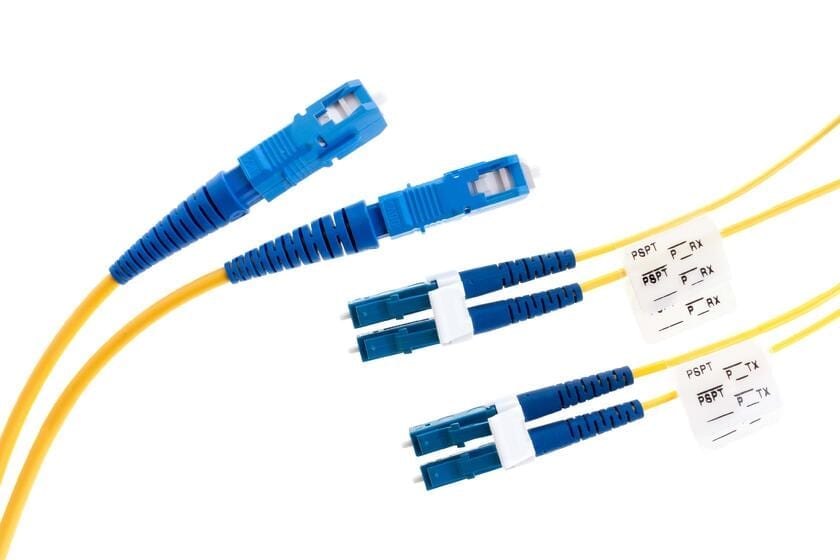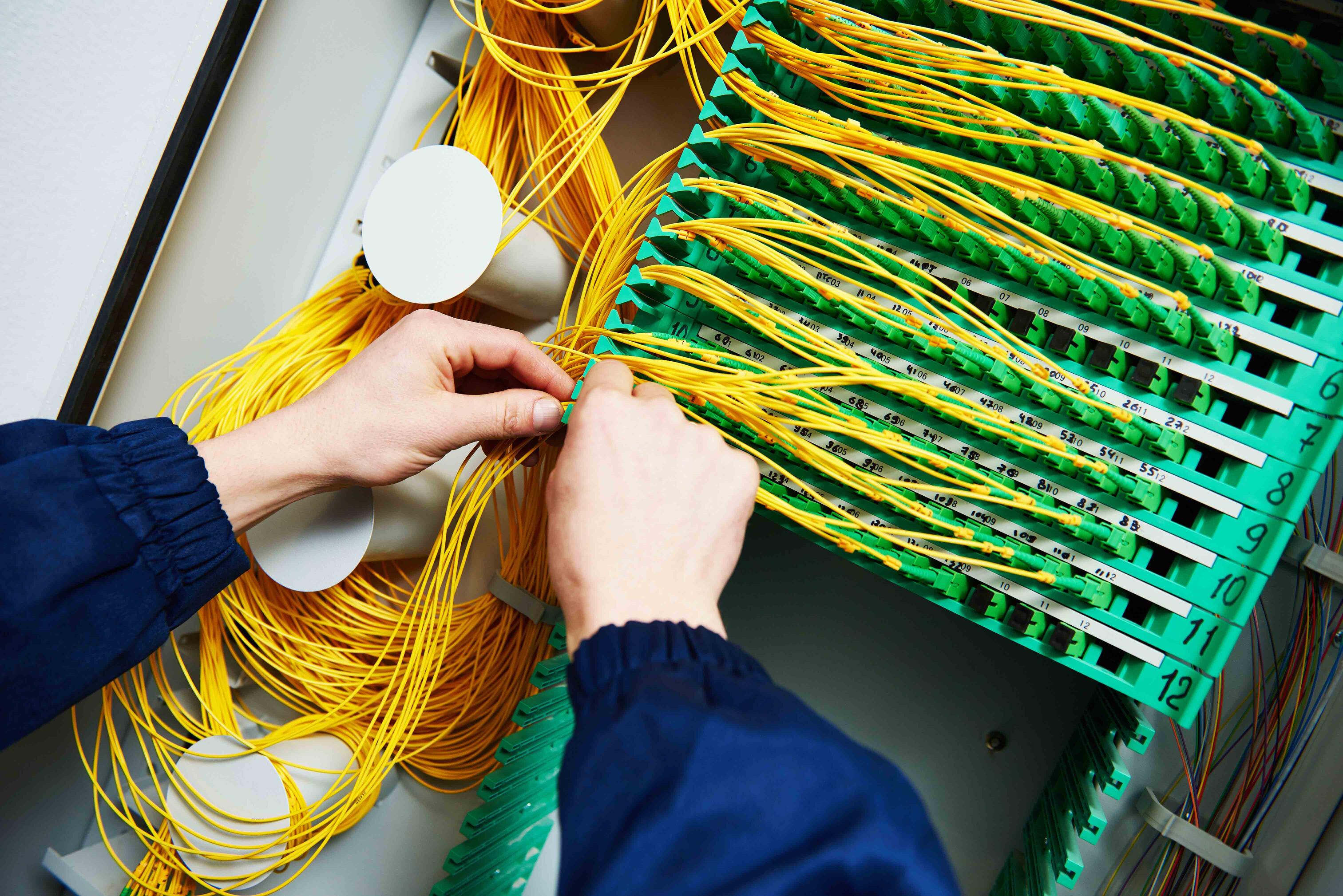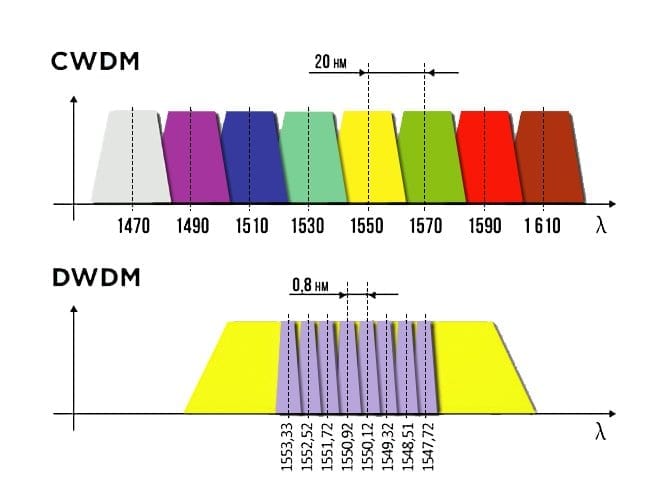
Fiber optic has made communication and data transmission faster than ever before. Within a matter of seconds, anyone can send data across the globe with no interruptions or downtime. As businesses demand higher bandwidth or faster speed connections, fiber optics have evolved to now have a complex design and structure with two different types of cores – single mode and multimode. Before we discuss these options, let’s discuss the basic of fiber and how it works.
Fiber Basics

As discussed in our previous blog, fiber networks run entirely on cables containing pieces of glass fibers that transmit data. These fiber cables carry signals using optical light technology and transmit telecommunications signals such as telephone, internet, and television.
One area of fiber that has evolved is the core itself. While it’s not visible from the outside, fiber now offers cables with two different core types – single mode or multimode. The differences between these cables may seem small, but there’s a major difference in performance. Both of these cables are used for all types of applications but the differences are confusing for some. Let’s examine the two options and see how they compare.
Single Mode Fiber Cable
Single mode means the fiber enables one type of light to pass through at a time. This type of fiber cable has a smaller average diameter of 9 µm and contains only a single strand of glass fiber that carries light directly through the cable. The core of a single-mode cable is usually around 9/125 (a ratio of 9 to 125 microns). Due to the smaller core size, there is little light reflection created when light passes through it. This lowers the fiber attenuation and allows the signal to travel further.

Single mode fiber is better for supporting higher bandwidth with little signal loss over a longer distance. These cables come in many different types and used for longer distance transmission for buildings. There’s a misconception that it’s more expensive than multimode, but costs have dropped significantly in the past few years to make it the ideal choice for implementing high-speed fiber networks.
Multimode Fiber Cable
Multimode has a much larger diameter than single mode fiber cables, usually between 50µm and 62.5µm. The core of a multi-mode cable is usually 50/125 or 62.5/125 microns in size. It uses an LED as its light source and allows for multiple modes or light paths to travel through the fiber cable at any given time. This means more light reflections are created as the light passes through the core, and more data can be transferred through. They are identified by the OM (optical mode) designation and used for data, security systems, and media applications.
 While it can carry more data, multimode experiences an increase in fiber attenuation and reduction in transmission quality over longer distances. This makes multimode fiber cables not ideal for large scale fiber networks. In addition, multimode fibers have a limit for how much they can handle. Speeds will always increase and at some point, your multimode fiber will reach its capacity, compared to the infinite speeds single mode fiber can handle.
While it can carry more data, multimode experiences an increase in fiber attenuation and reduction in transmission quality over longer distances. This makes multimode fiber cables not ideal for large scale fiber networks. In addition, multimode fibers have a limit for how much they can handle. Speeds will always increase and at some point, your multimode fiber will reach its capacity, compared to the infinite speeds single mode fiber can handle.
Expanding with WDMs
If a provider wants to add bandwidth to their fiber cables, they can use wavelength division multiplexers (WDMs). These devices combine light signals into multiple wavelengths onto a single fiber. Since this occurs at the same time, there’s no impact on speed or bandwidth.

There are currently two types of WDMs – CWDM and DWDM. CWDM (also known Coarse Wavelength Division Multiplexing) spreads out the light waves instead of making them closer, increasing the number of channels available. DWDM (Dense Wavelength Division Multiplexing) divides the optical spectrum into wavelength channels and makes them as close as possible.
Conclusion
While it all might look similar from the outside, fiber cables have evolved in a state-of-the-art and complex technology that now offers different types for various connections. For our dedicated fiber network, we currently use single mode cables to provide the best symmetrical speeds throughout all major business areas on Oahu. For more info on our fiber network, please call 808-237-5000 and request a free consultation below.
—–
Servpac is Hawaii’s Cloud Solution. Started in 2004, Servpac has evolved from a telecommunications provider, to an all-in-one cloud-based technology solution for Hawaii businesses. Our suite of services range from cloud computing, data colocation, managed services, dedicated fiber internet and VoIP phone solutions. We focus on providing premium customer service and deliver world-class solutions that transform Hawaii’s technology landscape.

